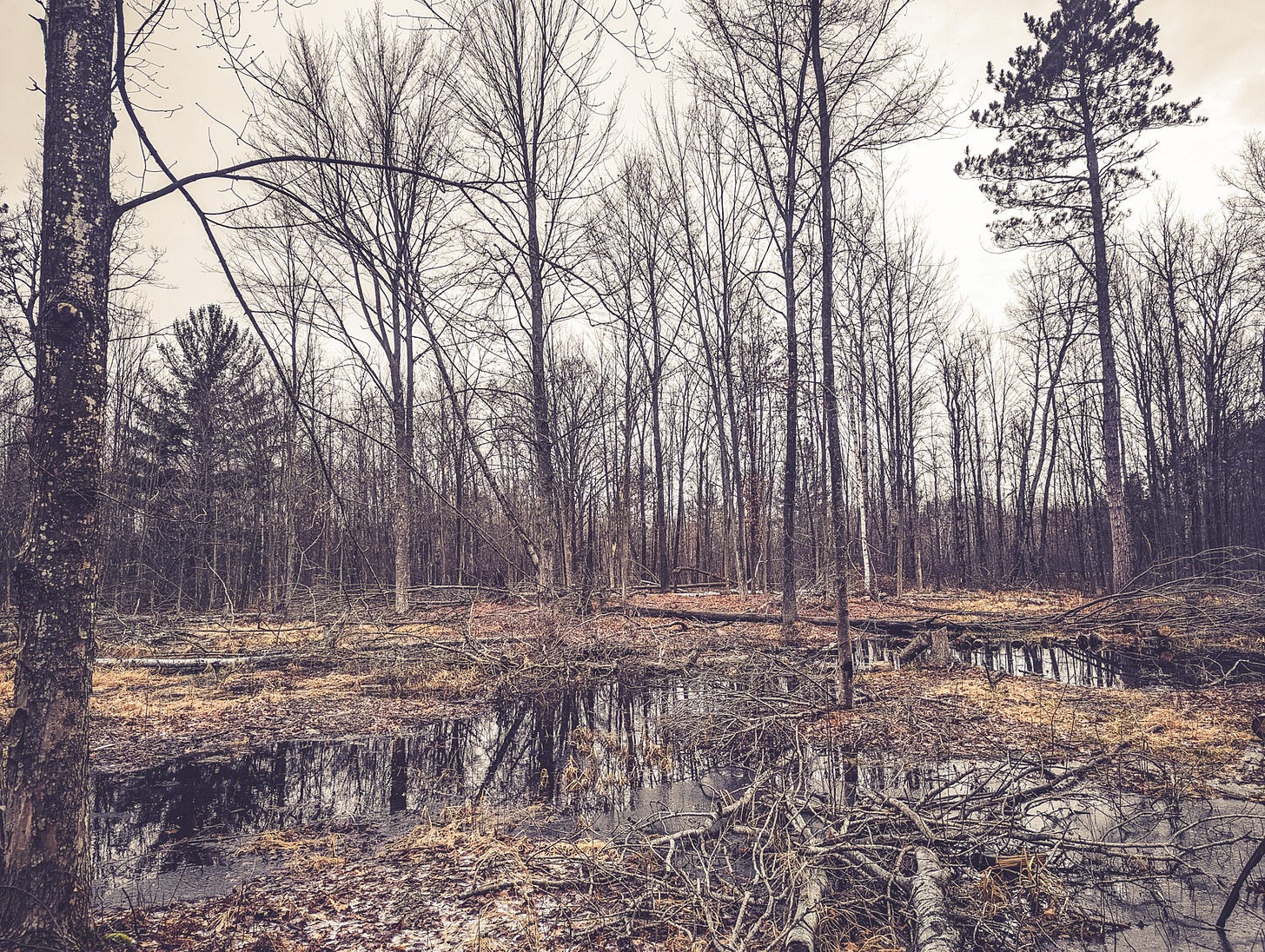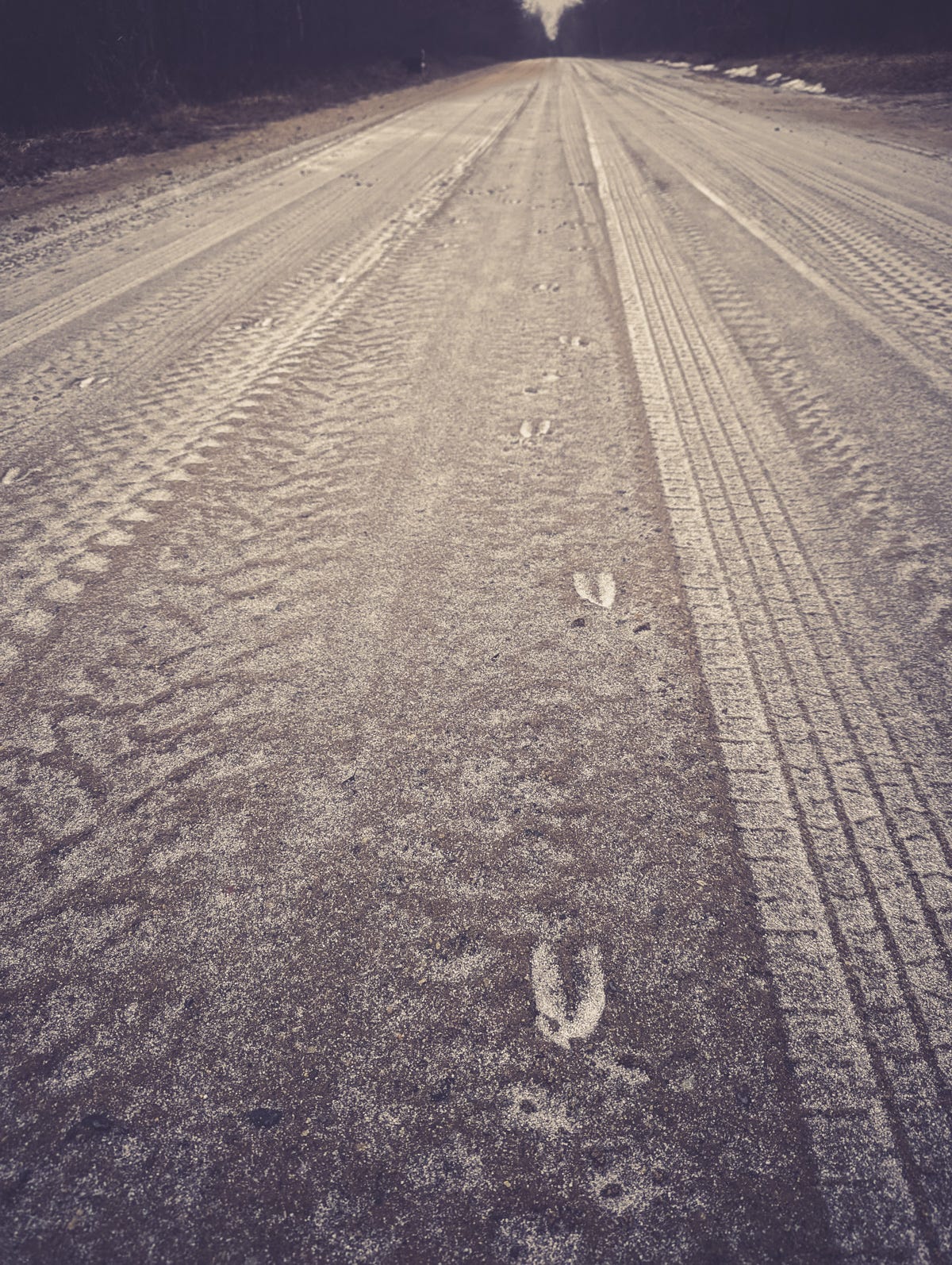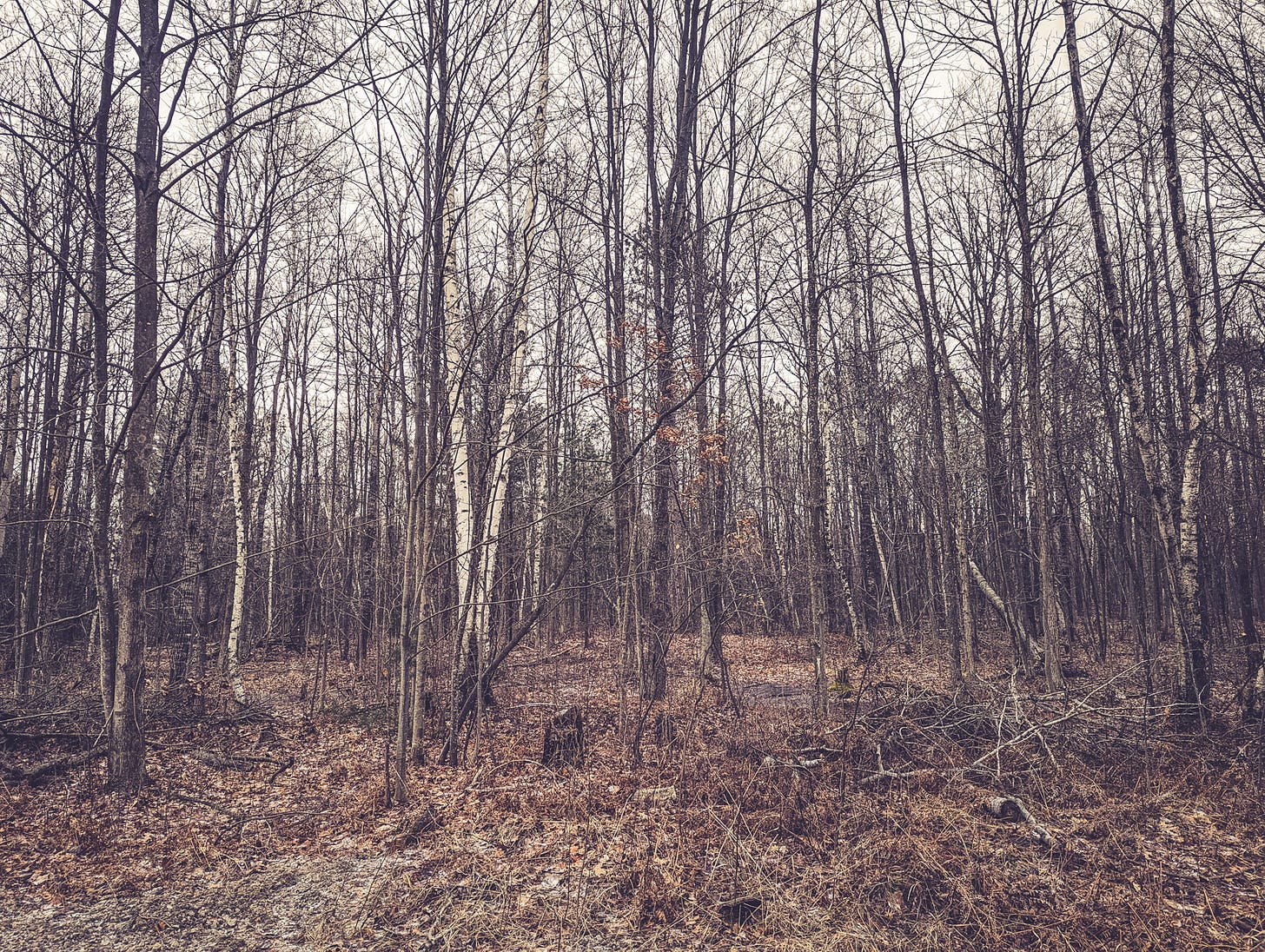Apothecary News: Since so many folks have asked I thought I would let you know that I am working on another batch of Woodswoman Salve! I only do this once a year so it takes a while to finish. I’m planning on having it restocked on the website within the next couple of weeks. Updates to come.
In the next newsletter we’ll continue our podcast discussion on the officinalis plants. The first one we’re diving into will be marshmallow, or althea officinalis. But some other musings in this newsletter first…
The wind this morning set my nerves on edge. It was a winter gale in its death throes, as if knowing spring was prowling the edges, nipping at its ankles. The air howled with it. Bone white aspen saplings were snapped and bent over the road like ribs of some giant beast. The trees whined in the distance as they fractured against each other. Deer carcass in the ditch, bear prints in the dirt, unknown human prints walking in the direction I was headed. Odin found a leg bone in the woods and carried it the whole way like some little forest reaper. It felt like the world was balanced on a knife point and I was walking along its spine.
I’m not sure where the little prickle of fear came from every time a new gust brought the blood to my cheeks. Maybe some lingering primal instinct that was born when winter often meant death. Or some animal part of me that recognized the animal rumbling beneath my feet. The hackles subconsciously went up like a standoff between two territorial wolves. I walked a bit quicker than usual this morning.
Dying things create the most destruction in their last breaths. We see this in our manmade world quite clearly. But I made it home and shut the door on its wailing for awhile.
The green garden is still far off. The seeds are still stratifying in the refrigerator. All planting plans are on pause until the stars align. Still I feel the promise of a new season in my blood. The possibility of one project in particular is sustaining me through the lingering cold.
When I first moved here it was difficult to describe to people how deeply in the woods I actually live. The trees engulf me entirely. It is always about ten degrees cooler here than in town. The mosquitoes and ticks are thick and merciless when the weather warms.
It’s challenging and inspiring all at once. But as a gardener I had a hard time wrapping my mind around how to work with a place like this. There is a small yard that I’ve filled with garden beds, but the woods that surround it seemed impenetrable.
Still, the trees beyond beckoned. We’re no different than your flowers and herbs, they said. Do we not send out roots, grow towards the sky, drink in the sun just like them? We just reach a bit further, live a bit longer. Yet in the scale and years of the universe, these differences aren’t so great.
Of course, I finally realized. The forest was simply a garden waiting for some compassionate hands to shape and guide it forward. So, I carefully outlined about an acre of thick forestland in front of the house to begin tending. My vision was to create a woodland glade, which is essentially a little opening in the forest where animals can gather to graze, and both shade and edge land plants can grow to create a rich tapestry of biodiversity.
For the weeding phase, the first thing I wanted to do was open up the understory. The thickness of underbrush restricted airflow and made it nearly impossible for any ground level plants to grow, stunted growth of slower growing trees, increased risk of disease and wildfire, and lowered overall biodiversity. To do this I hired a professional to use a forestry mulcher. This amazing machine essentially mulches shrubs and small trees into the soil, increasing soil health and keeping root disturbance to a minimum.
What I wasn’t anticipating was just how quickly the diversity of plants would pop up on their own without my interference at all. Beautiful grasses, sedges, partridge berry, iris and more peeked out into the sunlight. It was what I imagined would emerge after a prescribed burning which we know are so beneficial to forest health.
With the ground level layer of the garden already quickly filling in, I looked to the trees that were left. I thinned out any trees that were crooked or diseased as well as the aspens which were toward the end of their life cycle. It was my way of essentially deadheading and selecting the strongest trees to keep growing. Like in any garden, this extra space allows the remaining trees to grow quicker and wider.
Then winter came and progress slowed to a halt. Logs and branches laid unmoved under the snow. But now with spring somewhere on the horizon, this project will continue. I’ll keep cleaning up the debris, channel the wet spots into a dry creek bed, plant some food and medicine producing understory trees and plants, put in paths, and see where the forest leads me next.
This is an inspiring project for me because we don’t talk about forest gardens like this too often. In permaculture, “forest gardens” are typically gardens that are started on clear open ground. We rarely hear about gardens that are crafted in the forest themselves, yet they offer so much.
We’ve seen the remnants of them made by indigenous cultures thousands of years ago. Studies show that forest left to regenerate naturally without the influence of human hands produced only a fraction of the species compared to these ancient forest gardens. Salish peoples planted canopies of wild cherry, hazelnut, plum, and crabapple amongst the existing cedars and oaks. They planted understories such as cranberry, elderberry, hawthorn, and wild ginger. They burned, coppiced, transplanted, incorporated vines and ground covers.
What we sometimes lose sight of in the midst of clear cutting and colonization is that the forest still longs for our touch. It is better off with a gentle hand tending them than with no hand at all. We are a part of this web. We have thousands and thousands of acres of forestland abandoned to potential wildfire and dwindling diversity. We are so put off by cutting down trees that we do more harm than good by leaving them alone. In the city every tree is precious, but in the forest, too many trees have the opposite effect.
In a world facing a climate crisis, these forest gardens are the most resilient to shifting weather patterns. They retain moisture and create microclimates like no other landscape. If we shifted our perspective from field to forest to address our agricultural needs, perhaps we would be more resilient too.
The future is in the forest. This is what shapes my intent behind this garden. The privilege to be able to work in this way with the forest at all is not lost on me. We’ll see how it shifts and transforms this year.

If you’re sitting in the cold like me, waiting impatiently for the growing season, there are many things we can do right now to prepare. Use your Lunica Planner to document your plans and tasks in the spaces provided.
February Garden Tasks
Draw up garden layout
Make a consolidated list of all seed varieties being grown this year and their requirements
Stratify any seeds that require a cold dormancy
Order trees and bare roots for spring delivery
Sit with the garden or land to see what it wishes to be this year
Set up indoor seed starting racks, lights, trays and tools
If you want to move deeper into a seasonal land-based life, consider ordering my 2024 edition of the Lunica Planner. Because learning to live in tune with the land doesn’t come from grand gestures or life-altering shifts, but rather from daily routines, devotions and observations of the land and how we relate to it.
Lunica was created to be a gardener’s almanac and planner, complete with lunar gardening guides, record keeping, recipes, essays, and plenty of space to journal, plan and reflect.
Purchasing a planner also helps support this publication!
Thank you so much for being here! I also write a subscription-based newsletter that helps expand your plant knowledge by combining science and spirit. We go past surface level learning and dive deep into the multi-layered world of herbalism and gardening with practical recipes, case studies, tutorials, story, and folklore to bring your understanding into practice.









I love this. So often I wonder if the earth would be better off without humans, and it's refreshing to see a shift in the narrative, that humans are actually a needed part of the ecosystem, if we do our jobs correctly and mindfully. It gives me a sense of purpose, knowing I play a roll in this world.
I so appreciate your wise and well expressed thoughts. The forest enjoys our gentle handling and guidance! Like you, I'm eager to start seeds, watch them thrust upward, and get them into the ground so they can stretch out and thrive. Your forest clearing project is enviable, so much potential!